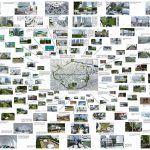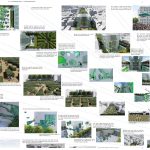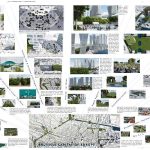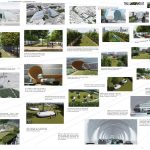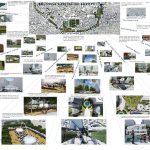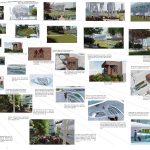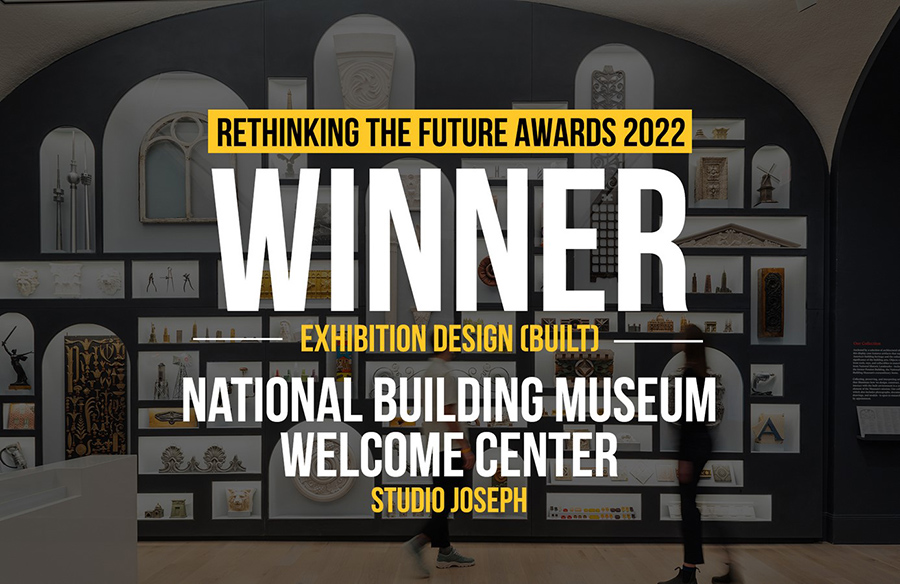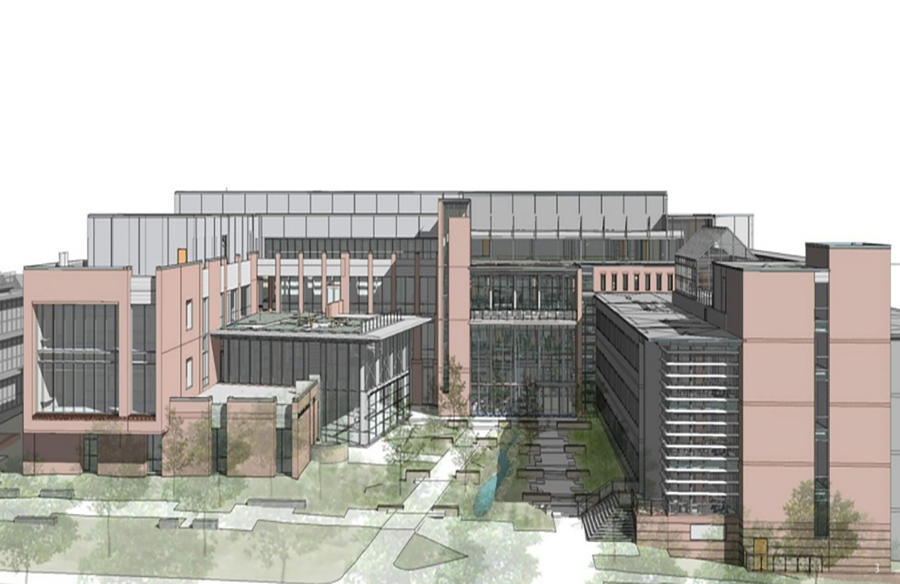A 7 km long city ring will become one green axis with striking architectures that shape the European identity of Brussels. ‘Brussels Capital of Europe’ undertakes to redefine the city center as a European meeting place in order to profile itself as the capital of all Europeans.
Architecture, Construction & Design Awards 2022
Second Award | Urban Design (Concept)
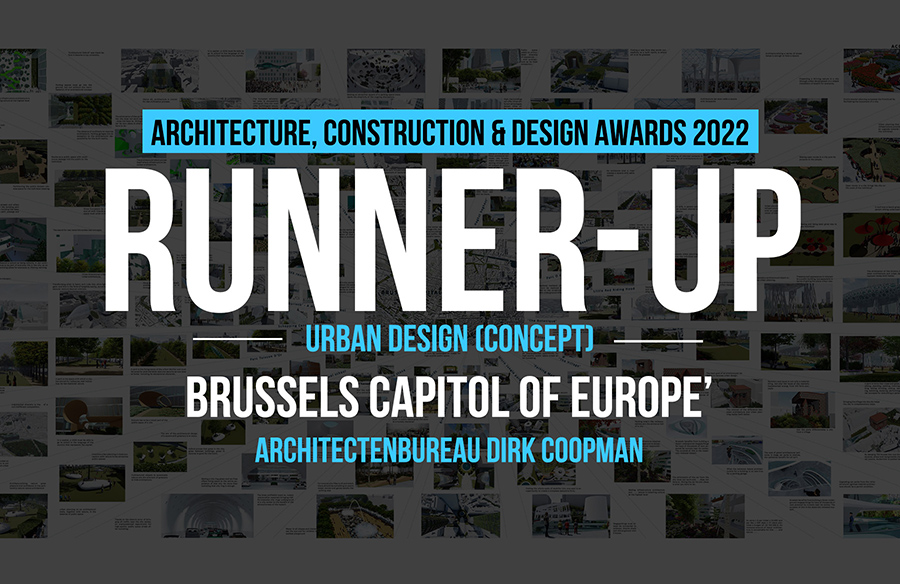
| Project Details | |
| Project Name : | ‘Brussels Capitol of Europe’ |
| Studio Name : | Architectenbureau Dirk Coopman |
| Team Member : | Steve_Ghysbrecht , Joeri Van Calster |
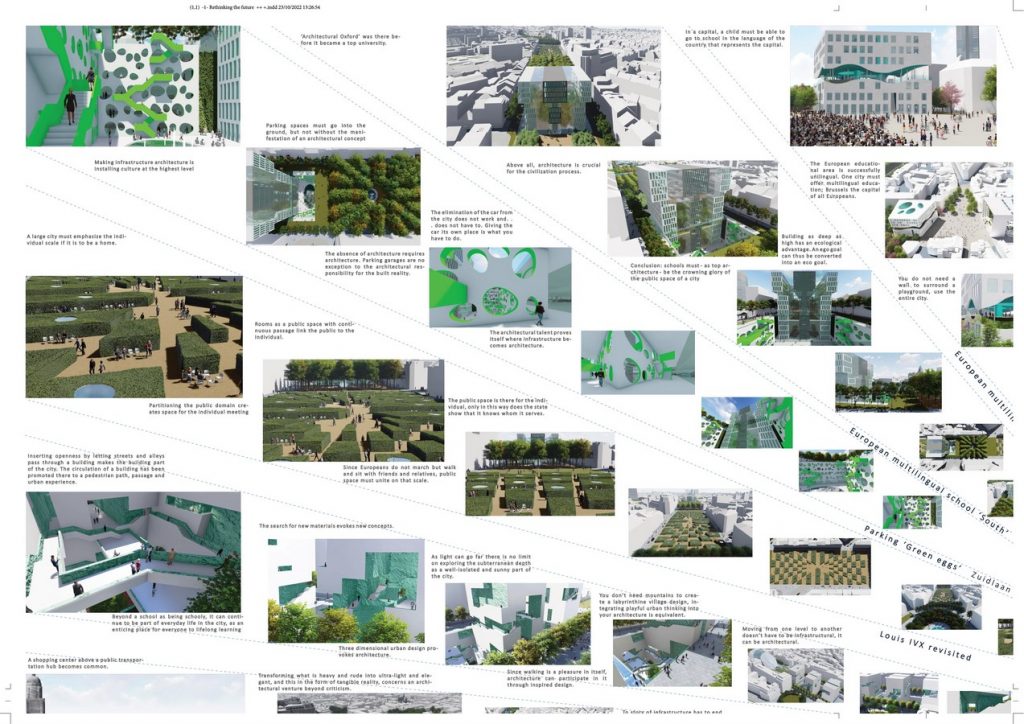
©Architectenbureau Dirk Coopman
From an urban planning point of view, it appears possible to eliminate the small ring road of Brussels, known as the pentagon, from car traffic. A dozen tunnels, each ending in a mega parking lot, provide the idea for this as follows: Brussels has two major ring roads. One at 8 km and one at 1 km from the center. These two heavy infrastructural roads are connected by very busy avenues that unsustainably disrupt the liveability of all the municipalities in between.
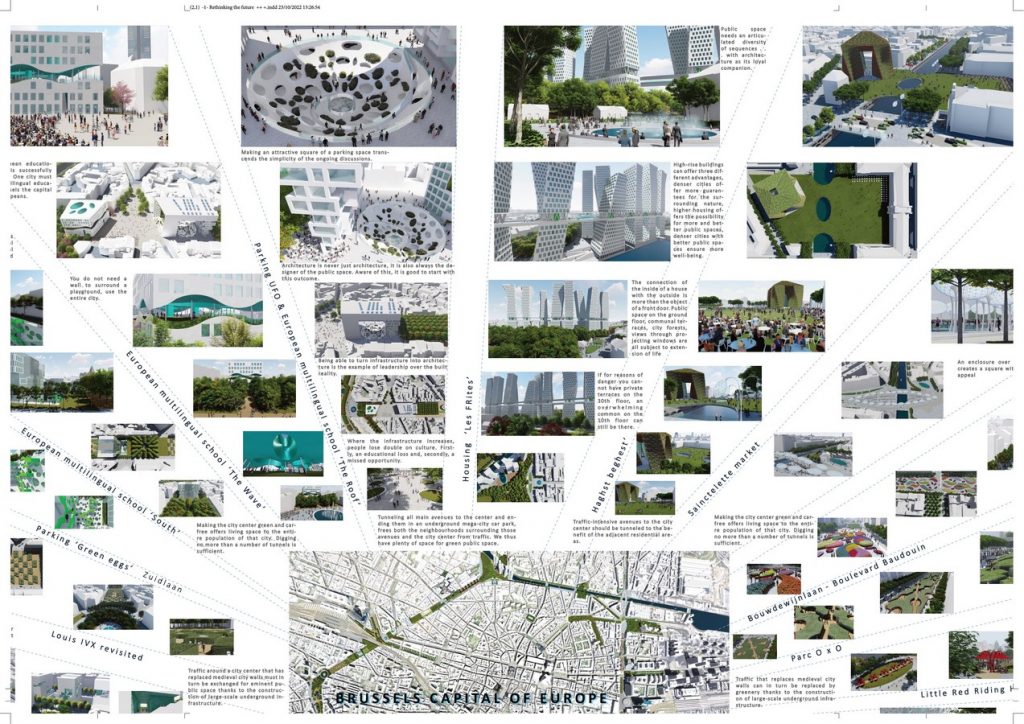
©Architectenbureau Dirk Coopman
Tunneling precisely into these avenues frees these peripheral municipalities from this crippling traffic *(2, 3, 4). We will have each of these bored tunnels – twelve in total – end in mega car parks, *(5, 6, 7, 8, 9) which will make the inner ring road free of traffic.
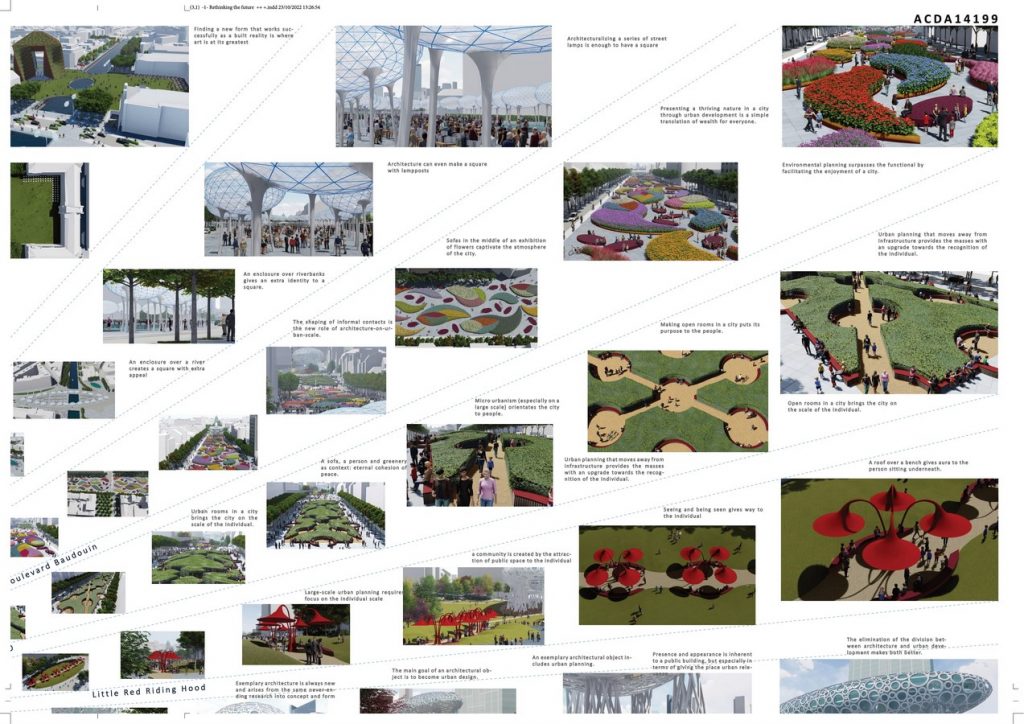
©Architectenbureau Dirk Coopman
We use the newly obtained topsoil to optimize the public domain and to realize Brussels as the capital of Europe. A green ring with many attractive public spaces aims to provide European urban exemplary design *(10, 11, 12, 13). At the same time, some fifty public buildings are completing these new public spaces. Each of these buildings supports a distinctly European non-administrative function *( 14, 15, 16). Just under half of the buildings are school buildings *( 17, 18) where young people can go to school in their own national language and other European languages. The other buildings are cultural institutions that support the European identity and thus shape Brussels as the capital of all Europeans.
- ©Architectenbureau Dirk Coopman
- ©Architectenbureau Dirk Coopman
- ©Architectenbureau Dirk Coopman
